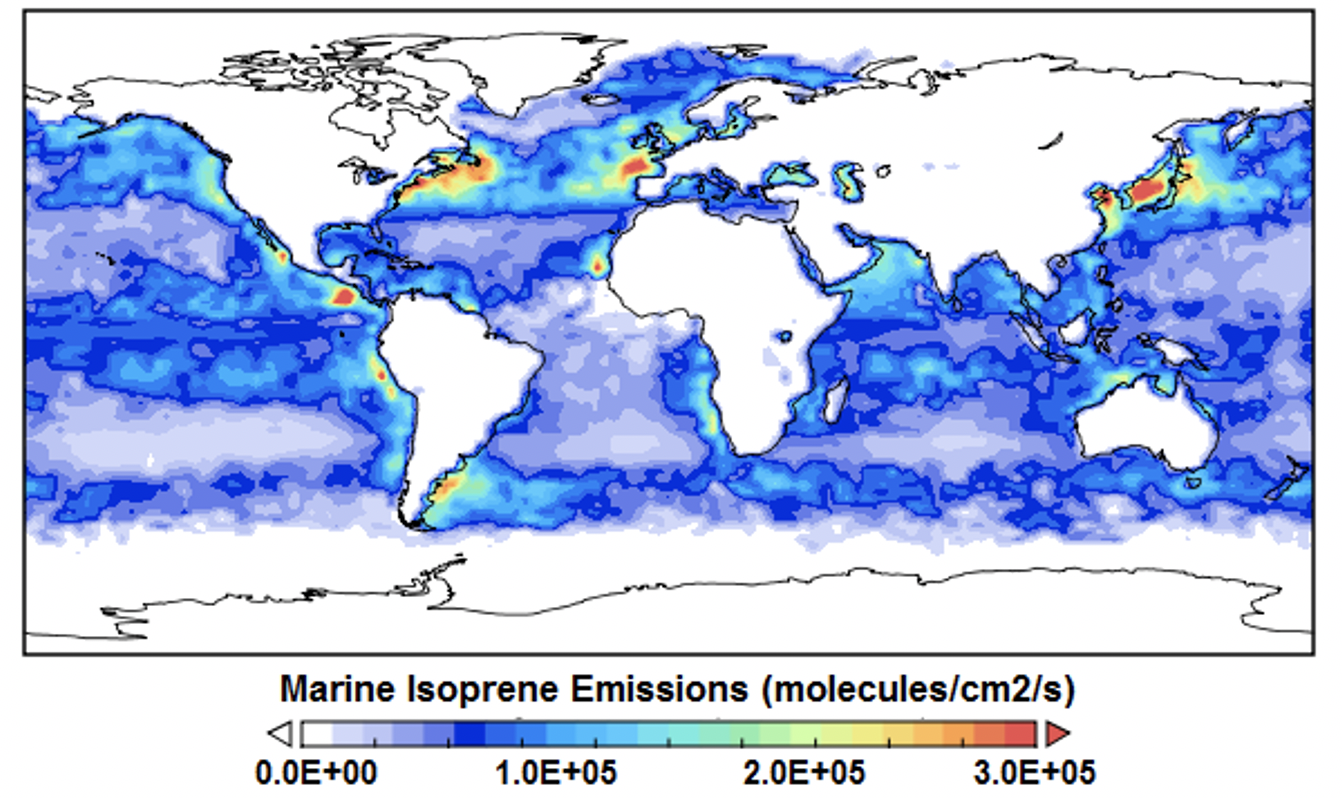Early Adopter

Applied Research Topic
Potential Applications ► Trace gas and aerosol emission modeling/tracking
Description
The global oceans, covering over 70% of the Earth’s surface, emit a suite of trace gases and particles into the atmosphere. These gases and particles play critical roles in the global biogeochemical cycle and also influence various atmospheric processes, including marine aerosol formation/modification, tropospheric photooxidant chemistry, and climate. Therefore, it is important to further understand marine emission processes and address their global impact. The objective of this work is to obtain the source and quantity of marine trace gas and particle emissions via remote sensing, and to investigate their effects on atmospheric ozone, particulates, and cloud condensation nuclei. Ultimately, we want to leverage this knowledge to advance global aerosol modeling and prediction and reduce uncertainty in global climate assessment.Significance
This research will help improve the accuracy of global and regional air quality prediction by evaluating the impact of marine gases on densely populated coastal areas, and also reduce uncertainty in the atmospheric radiation trends being parameterized by global climate models.Why PACE
The hyperspectral data from PACE’s Ocean Color Instrument will be instrumental in identifying phytoplankton communities commonly associated with the emissions of trace gas and aerosols into the atmosphere. Coupled with multi-angular atmospheric retrievals from the accompanying polarimeters, PACE will serve as an ideal earth-observing platform to support this project.End User(s)
National Weather Service; Air quality and climate research communitySAT Partner(s)
Cecile RousseauxPublications
Sarwar, G., Gantt, B., Schwede, D., Foley, K., Mathur, R., & Saiz-Lopez, A. (2015) Impact of enhanced ozone deposition and halogen chemistry on tropospheric ozone over the Northern Hemisphere. Environmental science & technology, 49(15), 9203-9211, DOI: https://doi.org/10.1021/acs.est.5b01657.
Gantt, B., Glotfelty, T., Meskhidze, N., & Yang, Z. (2015) Simulating the impacts of marine organic emissions on global atmospheric chemistry and aerosols using an online-coupled meteorology and chemistry model. Atmospheric and Climate Sciences. 5(3), DOI: http://dx.doi.org/10.4236/acs.2015.53020.
Krüger, O., & Graßl, H. (2011) Southern Ocean phytoplankton increases cloud albedo and reduces precipitation. Geophysical Research Letters, 38(8), DOI: https://doi.org/10.1029/2011GL047116.


